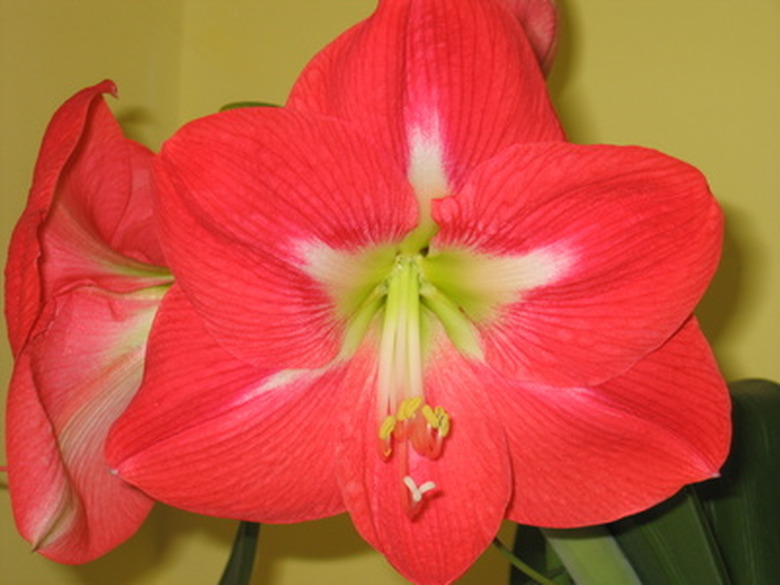How To Grow Amaryllis Bulbs In Glass Containers
Things Needed
- Glass vase
- Pebbles
- Amaryllis bulb
While amaryllis usually grows in soil, the amaryllis bulb can also be forced in glass containers filled with pebbles. This decorative method of forcing allows you to also view the roots, enabling you to monitor the amount of water in the pot at any given time. Healthy amaryllis produces its pink, white or red flowers around the winter holiday season, adding to your holiday decor.
Step 1
Place a 4-inch layer of pebbles in bulb vase or in an 8-inch-tall glass container that is 1 inch wider in diameter than the width of the amaryllis bulb. Use decorative or floral pebbles as they will be visible.
Step 2
Set the amaryllis bulb on top the pebbles, root side down. Push it gently into the pebbles just deep enough so the pebbles support the bulb. Place more pebbles in the vase around the bulb until only the top one-third of the bulb is above the pebbles.
- While amaryllis usually grows in soil, the amaryllis bulb can also be forced in glass containers filled with pebbles.
- Place a 4-inch layer of pebbles in bulb vase or in an 8-inch-tall glass container that is 1 inch wider in diameter than the width of the amaryllis bulb.
Step 3
Fill the vase with water until the surface of the water sits ½ to 1 inch beneath the bottom of the bulb. Do not let the bottom of the bulb sit directly in the water, as this causes it to rot.
Step 4
Set the bulb in a sunny window sill in a 65 to 75 degree F room. Add more water as the level drops in the vase so that the roots emerging from the bottom of the bulb remain moist.
Step 5
Rotate the vase once a day once the amaryllis produces a flower stalk. Rotating allows the amaryllis to receive equal light on all sides so the stalk grows straight and doesn't lean to one side. Amaryllis blooms within four to six weeks after planting.
- Fill the vase with water until the surface of the water sits ½ to 1 inch beneath the bottom of the bulb.
- Add more water as the level drops in the vase so that the roots emerging from the bottom of the bulb remain moist.
Tip
Trim off any brown roots attached to the bulb before planting, leaving only the white roots on the bulb. While not necessary, it prevents these dead roots from decomposing in the water, which can make the water cloudy.
Warning
Amaryllis that is grown in water usually only survives for one year and cannot be forced again. Discard the bulb once it is done blooming.
